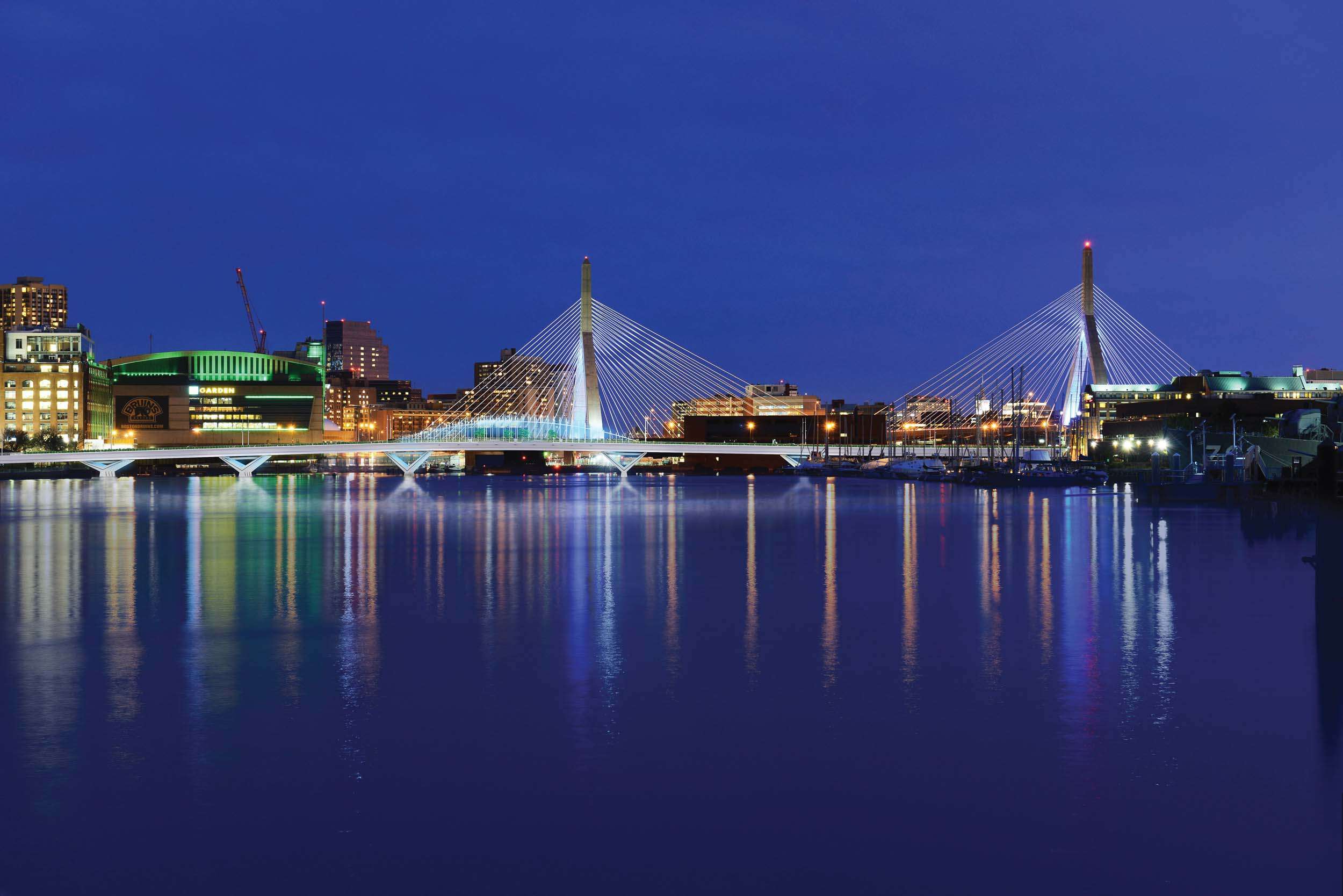Russell Bridge
Boston, MA

Community participation
Conceptual, preliminary, and final design
Construction services
The new William Felton “Bill” Russell Bridge has replaced a century-old truss bridge over Boston Harbor. This modern structure features wide sidewalks and introduces the first cycle tracks on a bridge in Boston. Remarkably, about 40 percent of the bridge’s width is dedicated to pedestrians and bicyclists, making it a truly multimodal facility and one of the most innovative bridges in the United States. In addition to accommodating four vehicular lanes, the bridge also includes a dedicated bus/HOV lane. The elegant design of the piers and the overall architecture draw inspiration from the adjacent Zakim Bridge. However, it complements rather than imitates this iconic cable-stayed structure.
Furthermore, the Russell Bridge boasts curved overlooks and open spaces at the center navigation span. These areas feature seating, a shaded trellis, and landscaping with sweeping views of the harbor and the city, enhancing the experience for all users along the waterfront.
- Client: City of Boston, MA
- Services: Architectural visualizations, Community participation, Conceptual, preliminary, and final design, Construction services
The new William Felton “Bill” Russell Bridge has replaced a century-old truss bridge over Boston Harbor. This modern structure features wide sidewalks and introduces the first cycle tracks on a bridge in Boston. Remarkably, about 40 percent of the bridge’s width is dedicated to pedestrians and bicyclists, making it a truly multimodal facility and one of the most innovative bridges in the United States. In addition to accommodating four vehicular lanes, the bridge also includes a dedicated bus/HOV lane. The elegant design of the piers and the overall architecture draw inspiration from the adjacent Zakim Bridge. However, it complements rather than imitates this iconic cable-stayed structure.
Furthermore, the Russell Bridge boasts curved overlooks and open spaces at the center navigation span. These areas feature seating, a shaded trellis, and landscaping with sweeping views of the harbor and the city, enhancing the experience for all users along the waterfront.